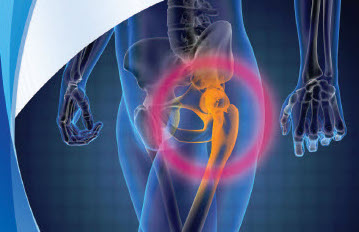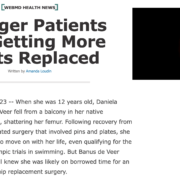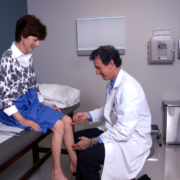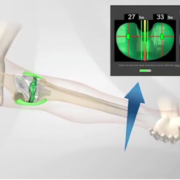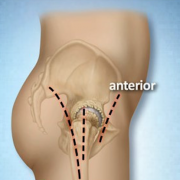Total Hip Replacement Surgery
Hip replacement surgery, also called total hip arthroplasty, involves removing a diseased hip joint and replacing it with an artificial hip joint or prosthesis. Frequently hip replacement is performed when someone’s hip becomes damaged and painful from arthritis. It’s important when reconstructing the joint that if abnormal biomechanics led to the arthritis, that they are understood and corrected.
Total hip replacement is the second most common joint replacement procedure performed following knee replacements. Hip replacement has proven to be one of the most successful surgeries ever developed, predictably relieving pain and improving quality of life.
Hip replacement surgery is generally performed when the hip joint has reached a point of destruction when limitations and painful symptoms can no longer be controlled with non-operative treatments. When exactly to proceed with surgery is not a black and white decision but one carefully weighed and discussed with the patient, often their family and the medical team. In the end, it is my patient who makes the final decision when they “are ready” to proceed. Usually this occurs when they feel frustrated and disabled enough. I tell them that “they will know when they are ready”.
Total hip replacement (THR) is a surgical procedure where the diseased cartilage and bone of the hip joint is surgically replaced with artificial materials. A total hip replacement prosthesis consists of a ball which is made of metal or ceramic and held in a precise position by a metal stem (often titanium). The stem is inserted down the marrow cavity of the femur. The ball is inserted into the new socket which consists of a liner with special wear characteristics (made of plastic, ceramic or metal) and which is supported by a titanium shell placed next to living bone so that bone grows into it. The materials chosen for these implants have been studied extensively over the years and are used because of their biocompatibility (they are accepted by your body), resistance to corrosion and their mechanical properties. Wonderful recent advances have been made by scientists and implant designers, which have vastly improved the wear characteristics so they can last in our bodies much longer.
We thank you for your readership. If you would like a personal consultation, please contact our office at 954-489-4575 or by email at LeoneCenter@Holy-cross.com.

